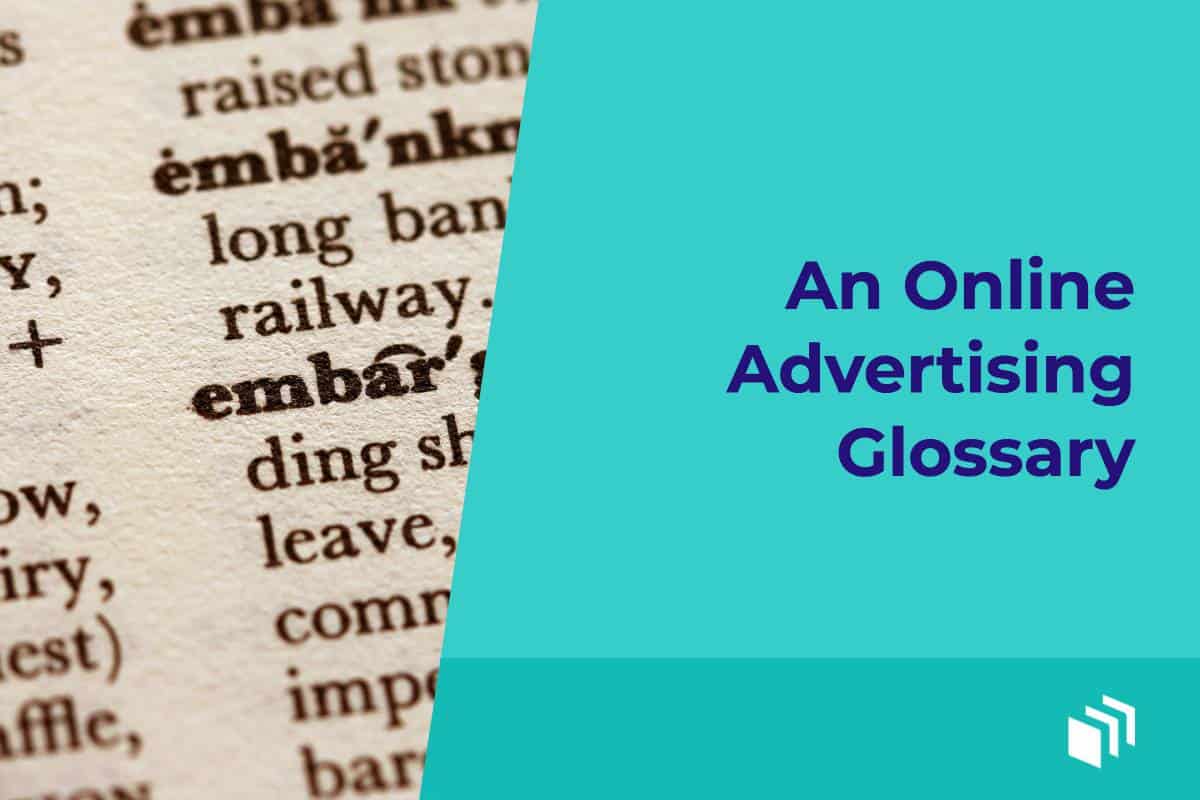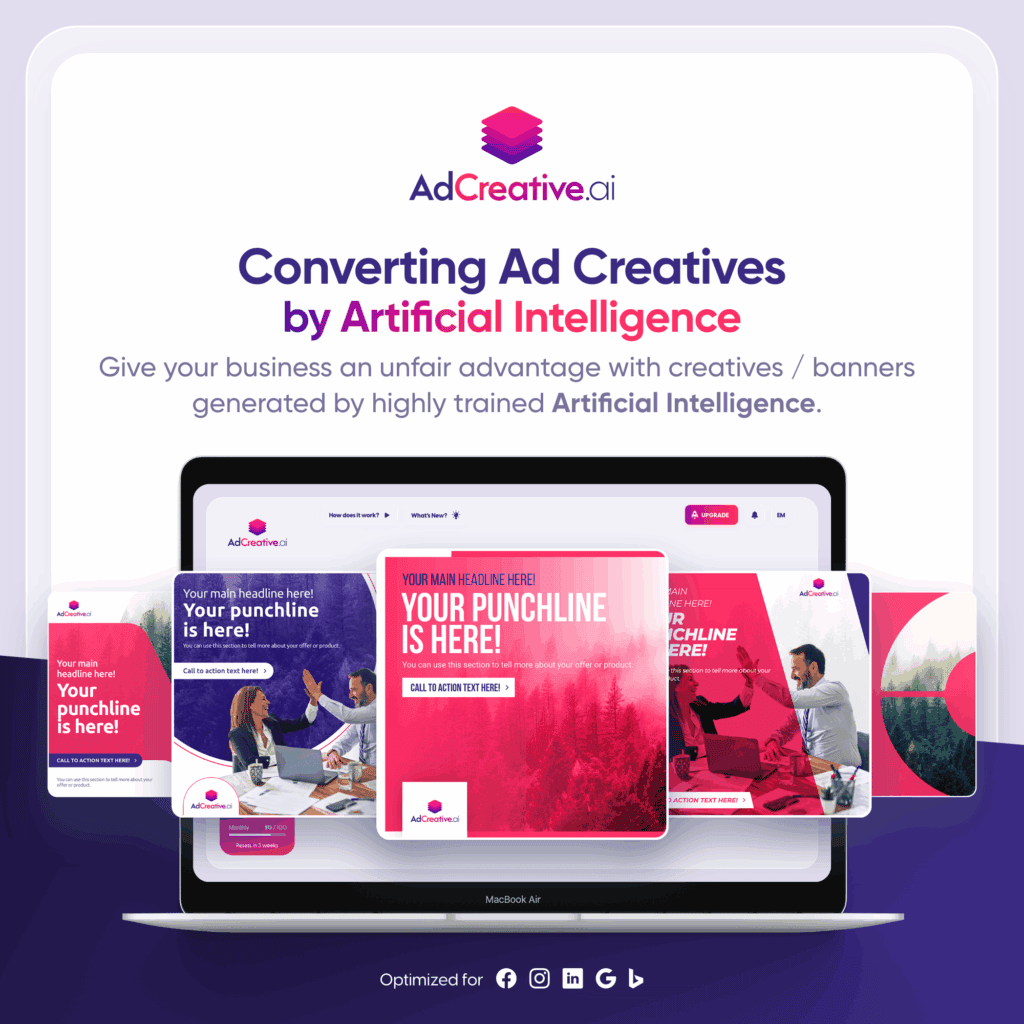An Online Advertising Glossary

One of the best ways to become familiar with something is to understand the terminology around the topic. The world of online advertising and the language around it has multiplied in the past decade. Here are definitions of some of the basic terms.
A/B testing (split testing) – By creating two versions of a web page or a section of a web page, the web page creator is able to see which one performs better. These comparisons are conducted by feeding the two versions to similar users randomly until a better performing version is chosen. This methodology is often used with two competing advertisements to find the better performing ad. You can read more about A/B testing here.
Ad network – Companies that connect advertisers to web sites that want to host advertisements. These networks have existed for other media sources (television, radio, etc.) but most discussion about ad networks centers on the use of an automated process to deliver these ads online – enabling sophisticated bidding, targeting, and tracking
Ad unit – The size of the ad displaying area. These units have been standardized by the IAB to provide a common range of formats for advertisers. With the advance of responsive design, these rigid sizes are expanding to ratio based presentations to handle a variety of display devices.
AdChoices – An initiative with the goal of allowing advertisers to feed ads that are more relevant to their viewers interests. For more detail, see the post on AdChoices.
AdSense – An ad network run by Google that allows publishers to serve automatic text, image, video, or interactive media advertisements. These advertisements are administered, sorted, maintained, and delivered by Google. You can read more about AdSense here.
CTA (Call to action) – This is an instruction to the viewer to take a specific and immediate action. This is the goal of most advertising, to create the desire to “click here.” You can read more about Calls to Action here.
CPA (Cost Per Acquisition) – Also known as “Cost per action” or pay per acquisition (PPA). CPA is a pricing model where the advertiser pays for a specified acquisition – for example a sale, click, or form completion.
CPC (Cost Per Click) – See Pay Per Click.
CPM (Cost Per Thousand) – This is a pricing model where a cost per 1,000 impressions (or views) is paid to run an advertisement. If a web publisher or ad network charges $2.00 CPM, that means an advertiser must pay $2.00 for every 1,000 impressions of its ad. The “M” in CPM stands for the Roman numeral for 1,000.
CTR (Click Through Rate) – This is the ratio of users who click on a specific link to the number of total users who view a page, email, or advertisement. It’s used to measure the success of an online advertising campaign as well as the effectiveness of email campaigns.
Email marketing – Sending a commercial message via email. In a broad sense, every business email you send should be considered email marketing. However, it is commonly denoting advertisement messages sent. Email marketing is often coordinated with online advertisements in a marketing campaign. You can read more about email marketing here.
Head keyword (Head term) – In contrast to a long-tail keyword, a head keyword is a very popular search term, meaning a lot of users are searching for it. These keywords are very competitive and thus very difficult to rank for. In most cases head keywords are shorter and have a broader definition. Ex. Web Design. See also Long-tail keywords.
Keyword – A keyword is a search term that users type into search engines. These terms become more popular as people search for the same terms. Content on pages, posts, and ad campaigns should be optimized to match these terms. See also Head keyword, Long-tail keywords, and SEO.
Landing page – Technically any page that is linked from another web page is a landing page. However, when we’re discussing them in regards to advertising they are distinct pages designed to focus on a single objective, usually collecting an email address or completing a sale. Most effective advertisements make use of landing pages. You can read more about landing pages here.
Long-tail keywords – These are longer, more specific keywords. Most optimization happens by using long-tail keywords as they can more accurately represent what a user is looking for and are as competitive to rank for as head keywords. See also Head keyword.
Paid social ads – Social media marketing is a closely related cousin to advertising and paid social ads are where the two overlap. Paid social ads can be heavily targeted. In many cases, ads are the only way to to get a good ROI on your social media efforts. In order to monetize, social media network providers have limited the exposure to even your friends and followers.
PPC (Pay Per Click) – A business model whereby a company that has placed an advertisement on a website pays a sum of money to the ad network or host website when a user clicks on the advertisement.
Retargeting – A form of targeted advertising. Retargeting makes use of a user’s previous online actions and sites visited to present related content or advertisements from one of those sites to the user. Google has their own flavor of this that they call remarketing. You can read more about retargeting here.
SEO (Search Engine Optimization) – Search engine optimization is a marketing strategy focused on optimizing web content to organically send signals to search engines so that they will send users looking for related content to your website. SEO is the counterpart to SEM. See also SEM.
SEM (Search Engine Marketing) – A marketing strategy that focuses on paid advertising with search engines. SEM may incorporate some components of SEO but it primarily influences search results via paid interactions.
Targeting (Targeted advertising) – Advertising that targets certain characteristics of the consumer. These characteristics can be demographic (race, economic status, sex, age, employment, etc.), psychographic (values, personality, attitudes, opinions, or interests), or behavioral (browser history, purchase history, or other activity). While there is some concern about privacy issues, targeting allows the user to help control the advertising that they are exposed to. Online advertising harnesses the ability to target in more ways than any other media.
Ready to get started?
There are licenses available for all types of sites needs needs.
Find the AdSanity tier that is right for you.
Want to give AdSanity a try?
Find the plan that fits your site and jump in.
Ready to make your ads work for you?
Pick the plan that fits and get started.
Let’s get your ads running.
Choose the plan that works best for you and start today.
Time to take control of your ads.
Find your perfect plan and go for it.
Ready to Make Money With Your Site?
Get ads on your site in
60 minutes or less
with AdSanity.
With our 14-day money back guarantee, it’s easy to see if AdSanity is the right fit for you.
Tags
Popular Pro Add-Ons
Our Community
Join our mailing list to keep up to date on everything happening with AdSanity and Pixel Jar.
Note: Your email address will be added to our CRM and be used to receive emails from Pixel Jar. You can unsubscribe at any time.




